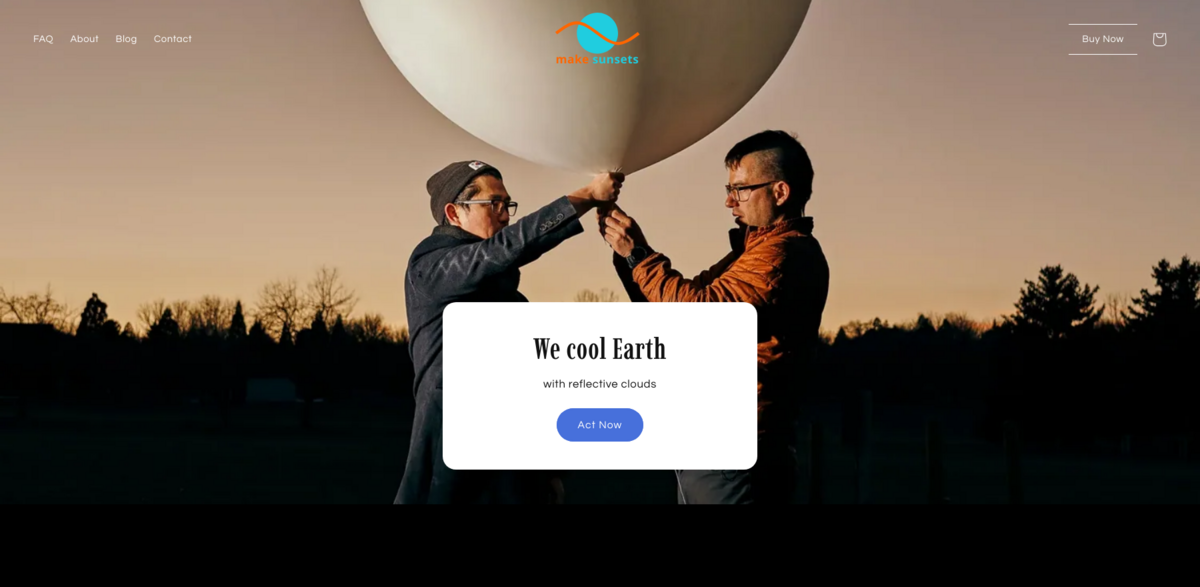What is the Make Sunsets Project?
Make Sunsets is all about cooling the Earth using reflective clouds—sounds pretty cool, right? The project launches balloons that release tiny amounts of naturally occurring compounds way up in the stratosphere, creating a kind of sunscreen for our planet. Inspired by nature’s own cooling events, like the massive Mt. Pinatubo eruption back in 1991, these balloons carry hydrogen and sulfur dioxide (SO₂) above 20 km (that’s over 66,000 feet!). Once there, the balloons burst, releasing SO₂ that forms reflective clouds, helping to keep the Earth cooler. It’s a clever, natural-inspired way to fight global warming.
The Main Benefit: Powerful Climate Impact
Here’s the kicker—Make Sunsets offers a seriously impressive leverage ratio when it comes to cooling the planet. Check out these key facts:
- 1 Cooling Credit offsets the warming effect of 1 ton of CO₂ for an entire year.
- Just 1 gram of SO₂ released into the stratosphere can prevent the warming caused by a ton of carbon dioxide.
- That’s a mind-blowing 1-to-1,000,000 leverage ratio in climate impact.
- The average American emits about 18.3 tons of CO₂ annually—so a few grams of SO₂ can make a huge difference.
How the Launch Works
The process is pretty fascinating. First, biodegradable natural latex balloons are filled with hydrogen and SO₂, carefully calculated to reach the stratosphere. As the balloon ascends, it expands until it bursts, releasing the SO₂ at altitudes above 66,000 feet. This precise release is what earns Cooling Credits. If the telemetry data doesn’t confirm the stratospheric deployment, the team simply re-launches. It’s all about accuracy and making sure the cooling effect actually happens.
Tracking and Data Recovery
After the balloon bursts, the payload doesn’t just fall to the ground without a trace. A parachute brings it back safely, and it carries instruments that log altitude, temperature, and other flight data. Typical flights last between 3 to 5 hours, giving plenty of time to gather important information. This data is crucial for verifying the success of each mission and ensuring the Cooling Credits are valid.
Why Cooling Credits Matter
Cooling Credits represent a new, cost-effective way for companies to meet their net zero goals. By investing in these credits, businesses can offset their carbon footprint with a method that’s inspired by natural processes and backed by scientific research. It’s a fresh approach to geoengineering that leverages the power of tiny particles in the stratosphere to make a massive impact on global warming.
Project Impact on Sustainable Development Goals (SDGs)
- SDG 13: Climate Action – Directly addresses global warming by reducing atmospheric heat.
- SDG 12: Responsible Consumption and Production – Offers companies a sustainable way to offset emissions.
- SDG 9: Industry, Innovation, and Infrastructure – Uses innovative technology for environmental benefit.
- SDG 15: Life on Land – Helps protect ecosystems by mitigating climate change effects.
Looking Ahead: The Future of Geoengineering
Make Sunsets is just one example of how geoengineering can be done thoughtfully and effectively. By mimicking natural cooling events and using precise technology, it opens the door to new possibilities in climate solutions. While it’s not a silver bullet, it’s a powerful tool in the toolbox for fighting climate change—one gram of aerosol at a time. The project shows that sometimes, small actions high above us can have huge impacts down here on Earth.





















